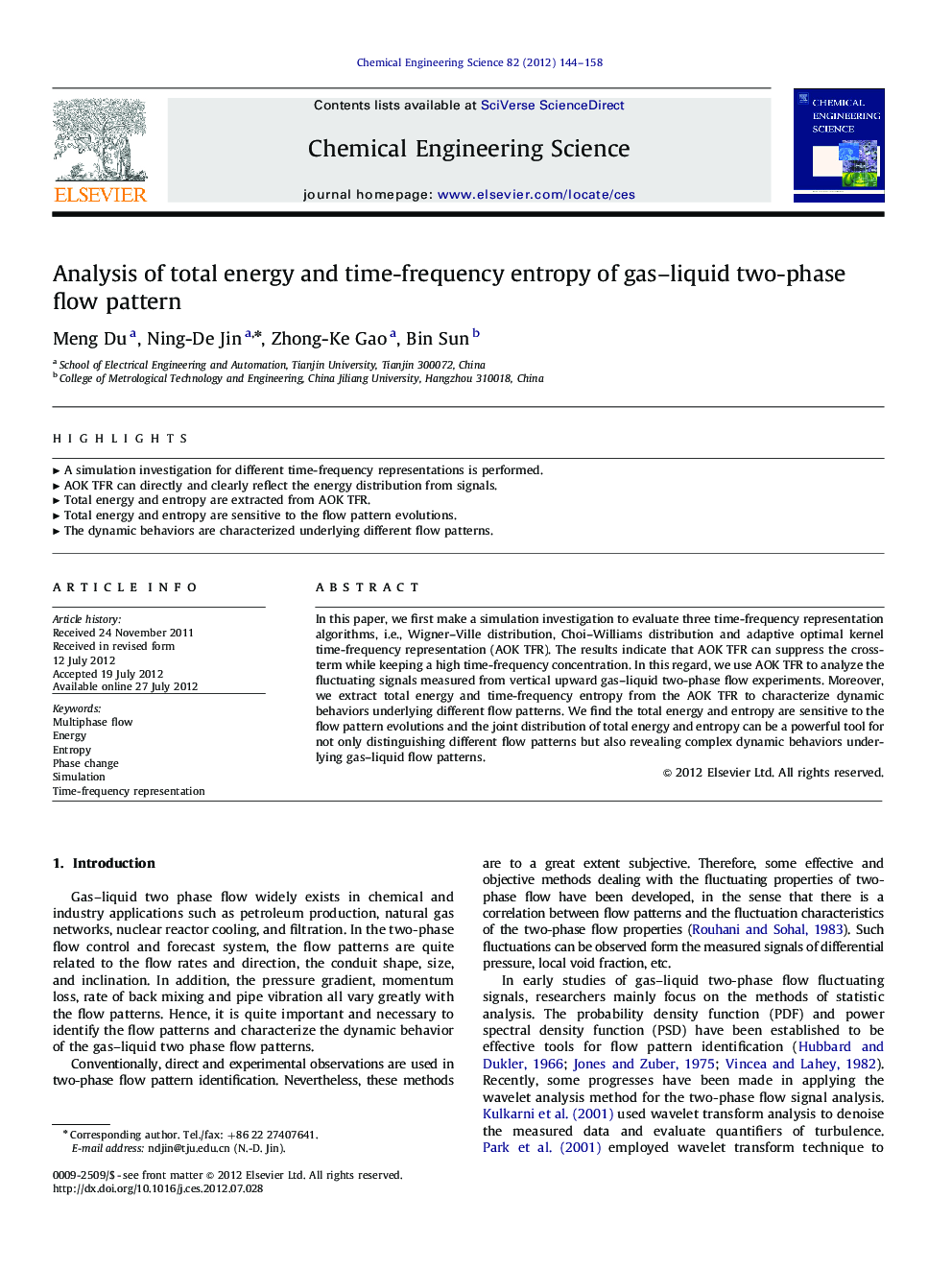| Article ID | Journal | Published Year | Pages | File Type |
|---|---|---|---|---|
| 155578 | Chemical Engineering Science | 2012 | 15 Pages |
In this paper, we first make a simulation investigation to evaluate three time-frequency representation algorithms, i.e., Wigner–Ville distribution, Choi–Williams distribution and adaptive optimal kernel time-frequency representation (AOK TFR). The results indicate that AOK TFR can suppress the cross-term while keeping a high time-frequency concentration. In this regard, we use AOK TFR to analyze the fluctuating signals measured from vertical upward gas–liquid two-phase flow experiments. Moreover, we extract total energy and time-frequency entropy from the AOK TFR to characterize dynamic behaviors underlying different flow patterns. We find the total energy and entropy are sensitive to the flow pattern evolutions and the joint distribution of total energy and entropy can be a powerful tool for not only distinguishing different flow patterns but also revealing complex dynamic behaviors underlying gas–liquid flow patterns.
► A simulation investigation for different time-frequency representations is performed. ► AOK TFR can directly and clearly reflect the energy distribution from signals. ► Total energy and entropy are extracted from AOK TFR. ► Total energy and entropy are sensitive to the flow pattern evolutions. ► The dynamic behaviors are characterized underlying different flow patterns.
